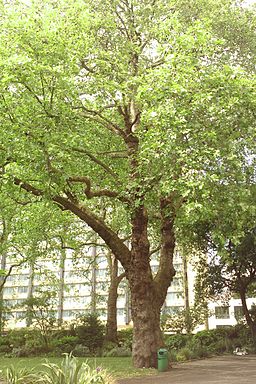Edward Hessler
 |
| By Tupinambah (Flickr: Heythrop College garden) [CC BY 2.0 (http://creativecommons.org/licenses/by/2.0)], via Wikimedia Commons |
Climate Change Garden
And it was the result of a serendipitous event. During the delay for landscaping the life sciences quadrangle, biology professors Doug Frank and Jason Fridley heard of plans to plant it with ornamental trees and shrubs. They proposed changing the composition of the plants so that it could be used in an ecology course and also in a global change laboratory course. They also had two requirements:
1. Plants from different climate regions
One was that species adapted to different climate regions be selected so that students could monitor plant behavior, growth, survival, and overall health over decades. There are plans to use rooftop webcams to provide a daily, photographic record of behaviors such as leaf-out and senescence which will be compared with weather data recorded from the weather station. There are also plans for additional instrumentation to make measurements of soil temperature and moisture, root growth and leaf photosynthesis.
2. Garden with a blocked design
The second was that it be a blocked design which allows statistical analysis. 100 trees and shrubs, planted in three zones ("replicates"), the same 33 species in each zone. Some examples of the trees and shrubs are oaks, maples, pines, birches, firs, hemlocks, magnolias, virburnums and witch hazels. Most of the design may be seen in the link below.
Instrumentation--the weather station and probes, e.g., the monitoring of plant water use in real time-- was funded by a crowd-funding initiative.
You can learn more, see a webcam view as well as find design diagrams at Bio@SU, Summer 2015. Just think, a field research site within a few meters of a laboratory, providing students an opportunity to learn how this kind of science works--lab and field--while practicing it.
A Framework for K-12 Science Education uses "the term 'practices,' instead of a term such as 'skills,' to stress that engaging in scientific inquiry requires coordination both of knowledge and skill simultaneously." This, it seems to me, is what is made possible by this innovative garden site.
Source and h/t: Bio@SU, Summer 2015

 CGEE Student Voice
CGEE Student Voice
No comments:
Post a Comment